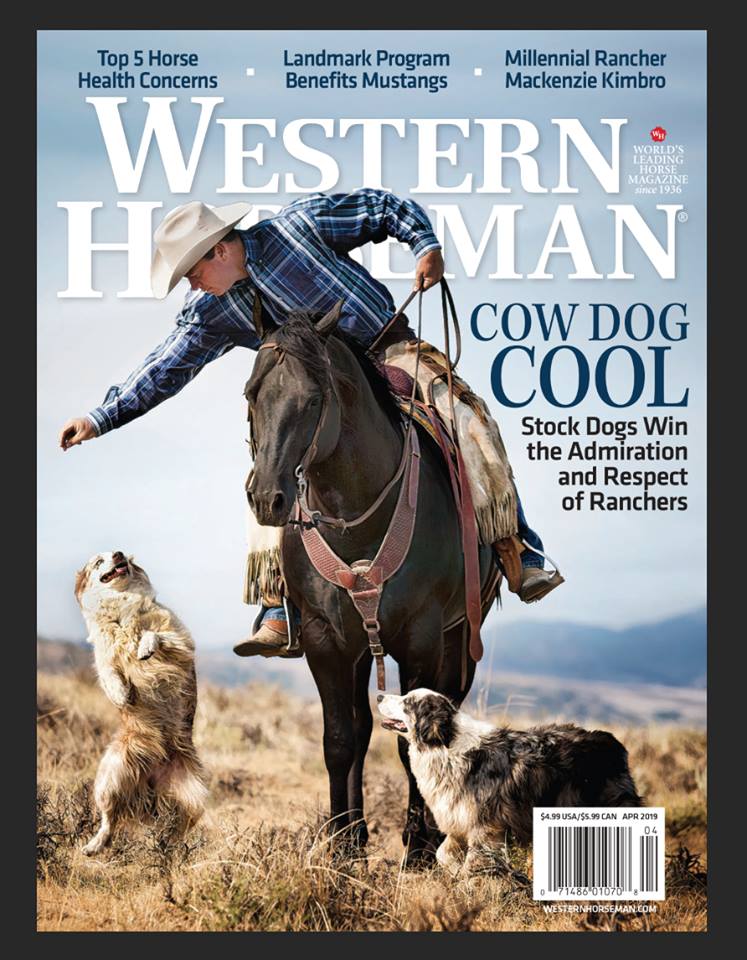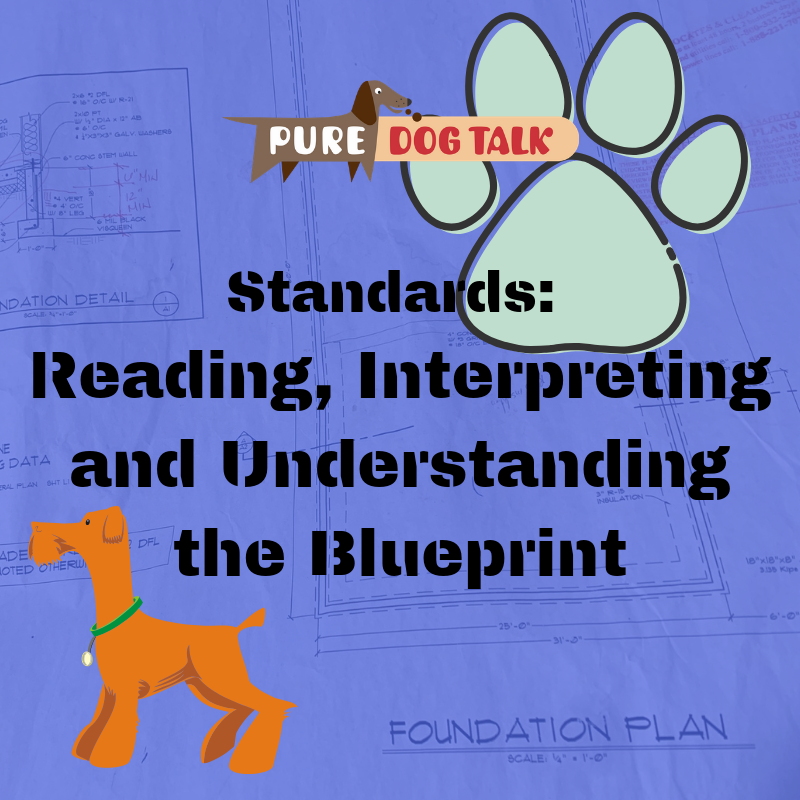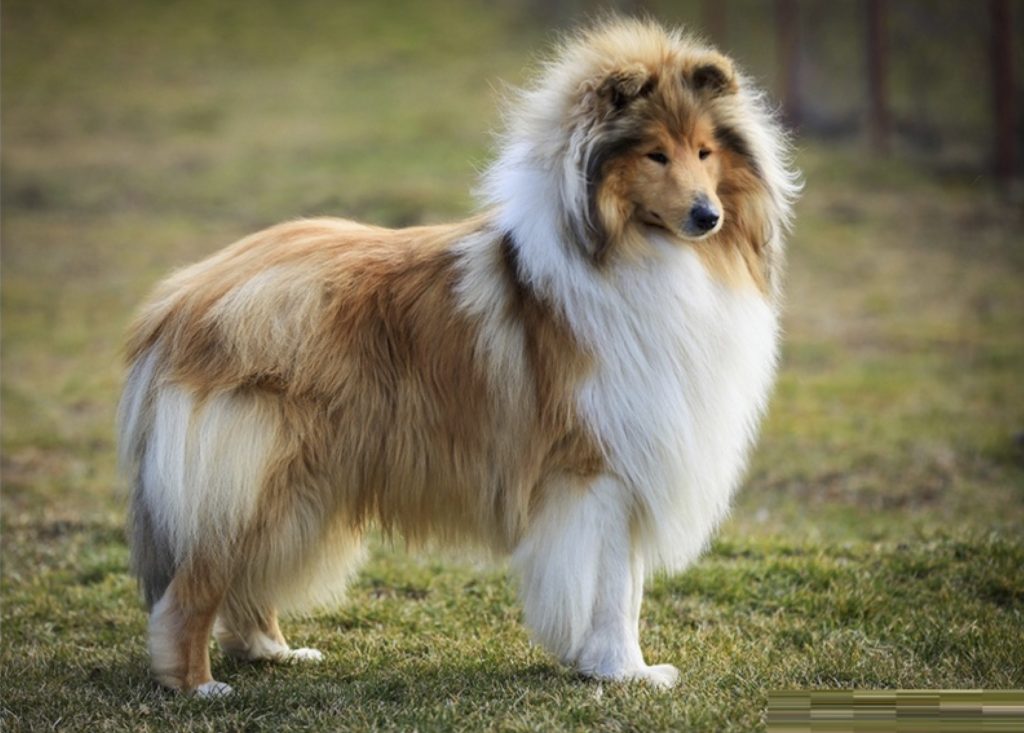492 – Made in America: Western Ranch Dogs Go Mainstream
Made in America: Western Ranch Dogs Go Mainstream
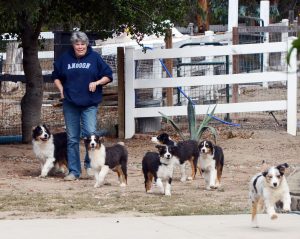
Nannette Newbury and her Australian Shepherds
Nannette Newbury, Australian Shepherd breeder under the Stone Pine banner and AKC judge, joins host Laura Reeves to talk about two breeds developed in the Western US and exploding in popularity.
“We’re kind of a unique breed, in that we were developed solely in the United States, the western United States,” Newbury said. “Pretty typical of most working ranch dogs, some of which we have today that remain unregistered, these dogs were bred to do a job, not to breed standard.
“There was very little record keeping. But one of the unique characteristics that differentiates the Aussie from other herding breeds is their loyalty, biddability and trainability and their intelligence. We have an off switch, meaning the dog could come in off the ranch and be part of the family. They could be a guardian for kids, guns in your truck, saddles in the back of the carriage. What’s fun, they have a wicked sense of humor, so that the charm of the breed beyond ranching kind of appealed to a lot of people.
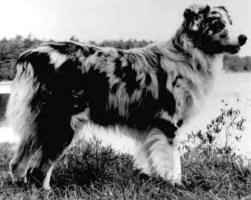
An early Australian Shepherd, circa 1971.
“We’re basically a compilation of mutts and our first breed standard wasn’t approved until, I believe, 1975. We’ve only been in AKC roughly 25 years. So, in terms of dogdom, we’re relatively new on the scale.
“Again, because of the popularity with the ranchers outside of working, the breed has gained the attention for pets and companion animals. I don’t believe that the need for working ranch dogs is as great as it used to be.
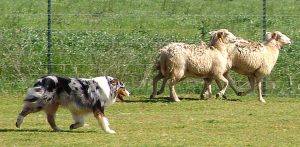 “There are people that are having a renaissance and going back to small ranching and they do use their dogs. But quite frankly, everybody I know on a ranch these days, they use ATV’s to work their stock. Horses and dogs are luxury items. In order for our breed to survive, they’re going to have to make the transition to companion animal.
“There are people that are having a renaissance and going back to small ranching and they do use their dogs. But quite frankly, everybody I know on a ranch these days, they use ATV’s to work their stock. Horses and dogs are luxury items. In order for our breed to survive, they’re going to have to make the transition to companion animal.
“I don’t believe it’s an easy one for this breed. This is a very active dog and it’s not a dog for first time dog owners. Walking an Australian shepherd around your neighborhood twice a day is not exercise for this breed.
“Not every puppy in a litter is born with herding instinct … even people that breed working stock dogs or working Australian shepherds, you cannot guarantee that every puppy in that litter is going to have working instinct, so it’s kind of fleeting.
“There are people that are dedicated to breeding and preserving that in our breed. (But) it is a pretty controversial topic. We’re talking about now ‘do you preserve the original function of the breed or do you help your breed transition to a companion animal so it has a future that is preserved.’
MAS: Less is more
Miniature American Shepherds developed as a separate breed and were recognized with the American Kennel Club in 2011.
“Every dog breed we have out there was created by somebody wanting to breed a better dog, that did something better,” Newbury noted. “Most of the dog breeds, the older ones, were bred for a certain function. The miniature Australian shepherd, as it was originally called, was developed in the 1960s in Southern California.
“Aussie breeders were breeding them because their clients were in LA, in apartments, and they wanted a smaller dog.”
297 – Standards: Reading, Interpreting and Understanding the Blueprint
Standards: Reading, Interpreting and Understanding the Blueprint
 Nannette Newbury, judges education coordinator for United States Australian Shepherd Association, breaks down breed standards.
Nannette Newbury, judges education coordinator for United States Australian Shepherd Association, breaks down breed standards.
Newbury’s presentation will help you understand: What are the parts of the standard, what’s a good and bad breed standard, what’s open to interpretation and what isn’t.
Breeders use the standard one way, judges have to use it another way, Newbury noted.
“That judge had to weigh a lot more than soundness,” Newbury said. “What good is it if a dog looks like a coyote and it’s sound. Judges can only go by what’s in the breed standard.”
How to apply the breed standard
Understanding the essence of the breed has to be a priority for judge or breeder, Newbury observed.
When dog shows began, folks had to come up with a way to compare and contrast dogs. The breed standard has to distinguish one breed from another.
“Our breeds came first and then we wrote standards,” Newbury said. “In order to read, interpret and apply a breed standard, you have to have a knowledge of canine anatomy, physiology, structure. It takes time to learn.”
Flaws, faults, implied faults
The breed standard is not a list of negative aspects, Newbury opined, rather it describes ideal.
Hallmarks of a breed are what make it distinct from all others and should be part of a good breed standard.
“If all dogs were perfect, judging would be easy. In the real world, deciding which quality or fault is more or less important and awarding accordingly is the quintessential job of the judge,” Newbury said. “As breeders, you pick your poison. Markings or fronts or whatever, you pick your poison. Judges do the same thing.”
Anything that deviates from the standard is a fault, Newbury noted, while the degree of deviation determines the severity of the fault.
“Go through (your breed) standard and list virtues and ideals. If the virtue affects the original function of the dog, consider those more important,” Newbury said.
“Anybody can find a fault. The hardest thing to do when evaluating a dog is to look at a dog, even one that is of poor quality, and find something good to say about it. It is a gift to be able to find the virtues in a dog.”
There’s always more to learn! Check out the archive!
246 – WSU Researcher Discovered the MDR1 Gene that Saves Lives
Meet the Researcher Who Discovered the MDR1 Gene
Herding dog owners everywhere should know their dogs may be sensitive to ivermectin, the powerful antiparasitic drug common in most worming medication. Now you can hear directly from the researcher who discovered the MDR1 gene mutation that causes this reaction.
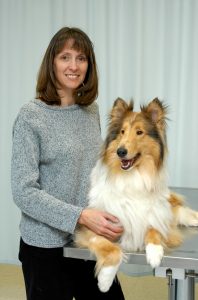
Dr. Katrina Mealey, Ph.D, DVM, WSU Researcher, who discovered the MDR1 gene mutation.
Washington State University’s Dr. Katrina Mealey, Ph.D., DVM discovered the gene literally by serendipity. While studying for her advanced degree, she encountered a journal article from the Netherlands. The article discussed treatment of a routine case of mites in laboratory mice, some of which had been engineered to remove the MDR1 gene. All of the mice who were missing the gene died from the treatment.
This caused Mealey to begin research to locate the gene in dogs.
From the WSU Foundation: “Mealey had barely graduated from high school when the antiparastic drug ivermectin came on the market, which quickly became known as a super-weapon for animals and humans against parasites, such as mites, heartworms, and lice. In a small percentage of certain dog breeds, however, veterinarians found an ivermectin treatment could prove fatal. While the antiparastic could cure a poodle, it might kill a collie. Based on those results, veterinarians followed the guideline, ‘White feet; don’t treat.’ But, no one really understood the why behind the differing responses.”
Mealey also invented the cheek swab that tests whether dogs carry the MDR1 gene mutation or not.
“Seventy five percent of Collies have the MDR1 gene mutation that makes them susceptible to fatal reaction to antiparasitic drugs like ivermectin,” Mealey said. “Whereas, Shelties only have 10 percent of the population affected.”
Dominant mutation
The MDR1 mutation is a dominant trait, Mealey added. If a dog has one copy of the gene, it will have drug sensitivity. If it has two copies, it will have more severe sensitivity.
Mealey’s ongoing research has indicated that dosage is the critical component to sensitivity. The low-level dosage of ivermectin contained in heartworm treatment is generally safe, she said, but the super high doses required to treat mange, for example, can be deadly.
Mealey has found the mutation in Silken Windhounds and even a very small number of Boxers.
Early effect of popular sire syndrome
According to extensive research at UC-Davis, Mealey said they have concluded that the MDR1 mutation originated in a herding dog before specific breeds were established.
“They theorize this was a dog particularly good at herding sheep, that became a popular sire. By the time breeds were established in the British Isles, they all carried this mutation,” Mealey said.
Researchers have not identified the mutation in herding breeds that originated in other parts of the world. It is seen primarily in Collies, Shetland Sheepdogs, Old English Sheepdogs, Australian Shepherds, etc.
For more information on Mealey’s work, check out: https://foundation.wsu.edu/2018/04/03/dogs-best-friend/

